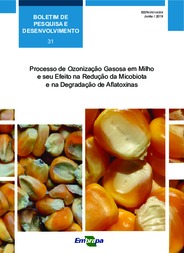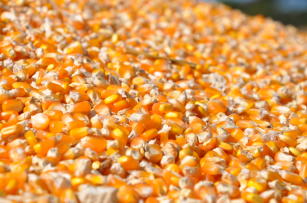Processo de ozonização gasosa em milho e seu efeito na redução da micobiota e na degradação de aflatoxinas.
Processo de ozonização gasosa em milho e seu efeito na redução da micobiota e na degradação de aflatoxinas.
Author(s): FREITAS-SILVA, O.; CASTRO, I. M. de; TROBETE, F. M.; ASCHERI, J. L. R.; DIREITO, G. M.; PORTO, Y. D.
Summary: O presente trabalho estudou o efeito da aplicação de ozônio gasoso sobre a degradação das aflatoxinas AFB1, AFB2, AFG1 e AFG2 em milho, em três diferentes condições experimentais, de modo a se avaliar a viabilidade de um sistema-protótipo proposto para ozonização. A ozonização gasosa mostrou-se uma tecnologia não térmica eficaz para reduzir a contaminação por aflatoxinas em milho triturado. Os tratamentos com ozonização mais drásticos, ou seja, aqueles com maior concentração de ozônio, maior tempo de exposição e menor massa de grãos, apresentaram melhores resultados na redução da contaminação por aflatoxinas totais, alcançando valores próximos a 45%. Portanto, o sistema de ozonização proposto mostrou-se eficaz nas condições estudadas, podendo servir de modelo para utilização em silos de armazenamento de milho e de outros tipos de alimentos. The present work studied the effects of the application of gaseous ozone on the degradation of aflatoxins AFB1, AFB2, AFG1 and AFG2 in corn, in three different experimental conditions, in order to evaluate the viability of a proposed prototype system for ozonization. Gaseous ozonation has provedto be an effective non-thermal technology to reduce aflatoxin contamination in ground corn. The more drastic ozonation treatments, i.e., those with higher ozone concentration, longer exposure time and lower grain mass, showed better results in the reduction of contamination by total aflatoxins, reaching values near to 45%. Therefore, the proposed ozonation system proved to be effective under the studied conditions and could serve as a model for use in storage silos of corn and other types of food.
Publication year: 2019
Types of publication: Booklets
Unit: Embrapa Food Technology
Related content
Observation
Some of Embrapa's publications are published as ePub files. To read them, use or download one of the following free software options to your computer or mobile device. Android: Google Play Books; IOS: iBooks; Windows and Linux: Calibre.
Access other publications
Access the Agricultural Research Database (BDPA) to consult Embrapa's full library collection and records.
Visit Embrapa Bookstore to purchase books and other publications sold by Embrapa.


